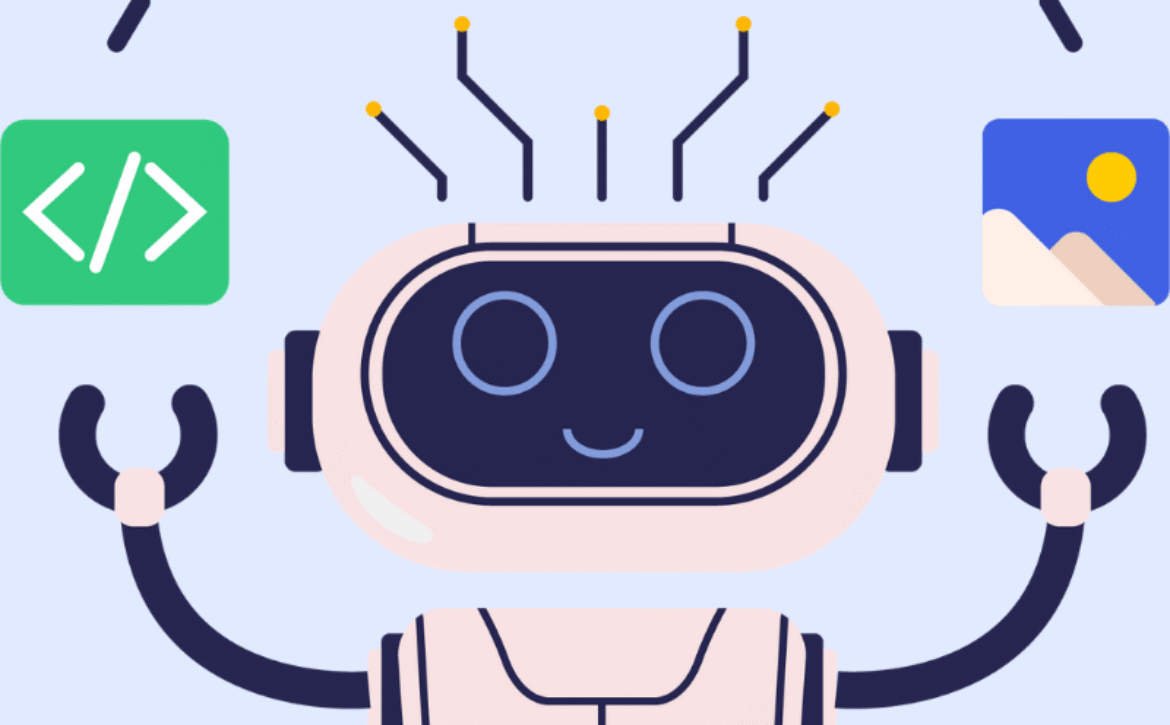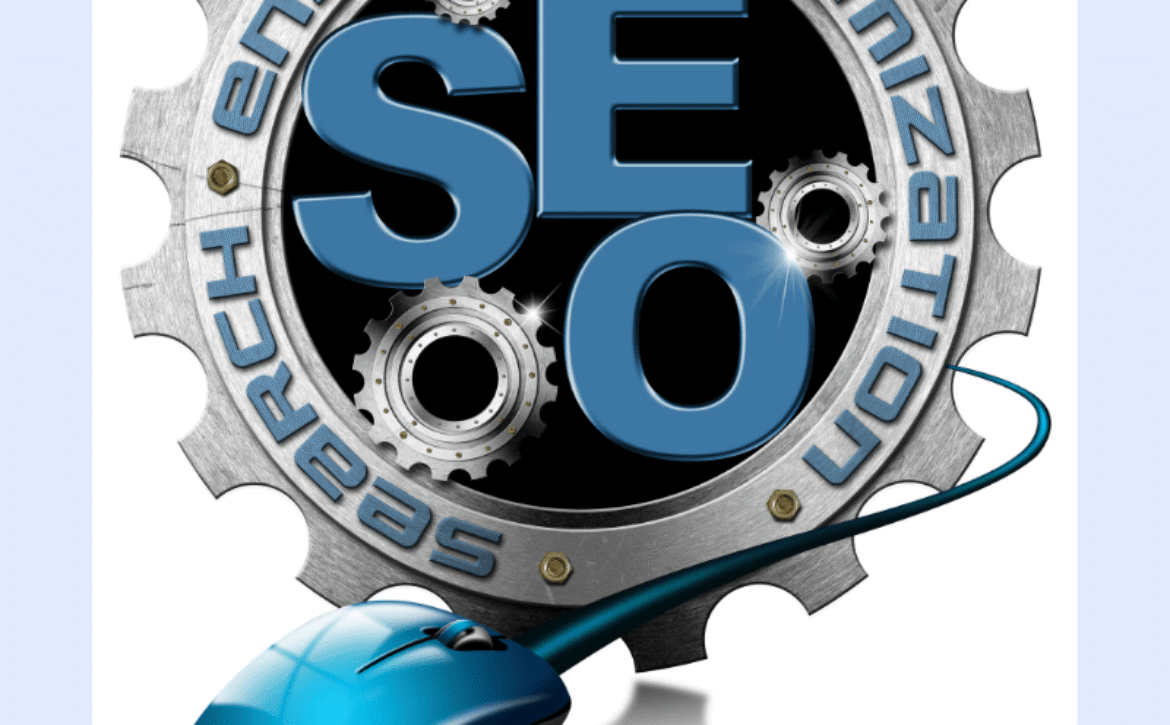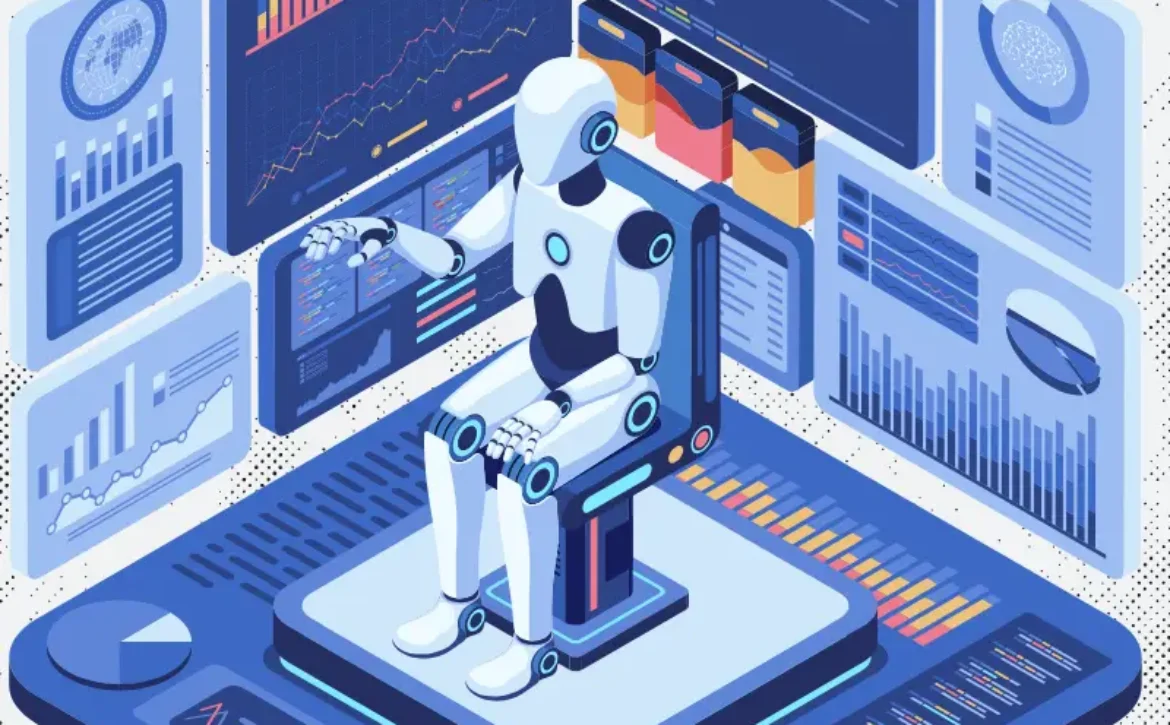AI-Driven SEO Checklist Strategy for 2025
Introduction
In the rapidly shifting world of digital marketing, SEO no longer operates in isolation. Artificial Intelligence (AI) is now central to every aspect of a winning SEO strategy—from research and optimization to execution and monitoring. This checklist will help you optimize your website for 2025 using the most current, AI-powered best practices.
1. Smart Content Planning with AI
AI tools like Jasper, Frase, and SurferSEO are revolutionizing how marketers plan content. Rather than guessing what users might search, these tools analyze real-time search intent and recommend structured outlines.
Key Steps:
Build topic clusters to target specific user journeys.
Use AI to uncover trending queries, questions, and related topics.
Incorporate voice-friendly subheadings (questions, how-to’s, conversational language).

2. Semantic Keyword Research
Forget stuffing keywords—modern SEO focuses on topical authority and natural language processing (NLP).
Key Steps:
Focus on 4–5 word long-tail phrases with semantic intent.
Include LSI keywords naturally in headings and paragraphs.
Let AI help group related keywords under one umbrella theme.
3. On-Page Optimization Tactics
Optimizing your content using AI ensures consistency in structure, tone, and effectiveness.
Key Steps:
Use 1–2% keyword density, ensuring it reads naturally.
Optimize your title (H1) and subheadings (H2–H3) with structured hierarchy.
Generate SEO-friendly meta titles and descriptions with GPT tools.
4. Schema & Structured Data Integration
Search engines now prioritize rich results. Schema markup helps AI better understand your content and improves visibility.
Key Steps:
Use JSON-LD to implement schema types like BlogPosting, FAQ, or Product.
Add “Speakable” Schema for voice-search optimization.
Test structured data using Google’s Rich Results Tool.
5. Refreshing Existing Content
Google’s Core Web Vitals now directly impact rankings. AI tools help identify and fix performance bottlenecks.
Key Steps:
Use AI-based heatmaps (e.g., Hotjar, Clarity) to analyze user behavior.
Improve page speed, eliminate layout shifts, and prioritize mobile UX.
Structure content for easy readability on mobile—short paragraphs, bullet points, and visuals.

6. UX & Mobile Optimization
Forget stuffing keywords—modern SEO focuses on topical authority and natural language processing (NLP).
Key Steps:
Focus on 4–5 word long-tail phrases with semantic intent.
Include LSI keywords naturally in headings and paragraphs.
Let AI help group related keywords under one umbrella theme.
7. Backlink Building with AI Automation
Smart outreach builds authority without wasting hours manually emailing.
Key Steps:
Use AI to generate personalized outreach emails for guest posts and collaborations.
Focus on AI and digital marketing blogs, forums, and podcasts for high-quality links.
Internally link using AI-suggested anchor text for contextual relevance.
8. AI-Enhanced Monitoring & Insights
Modern SEO is dynamic. Let AI help you monitor and react in real-time.
Key Steps:
Set up GA4 dashboards with predictive analytics features.
Analyze bounce rate, user flow, and top-performing queries using AI tools.
Adjust strategy monthly based on performance trends.
Final Thoughts
AI is no longer a luxury in SEO—it’s a necessity. Integrating AI into your strategy ensures you stay competitive, agile, and visible in an ever-crowded search landscape.
For a more in-depth SEO checklist, I follow this strategy.
How AI Is Changing On-Page SEO
The Rise of Intelligent Search Optimization
In the past, on-page SEO was mostly about inserting keywords, optimizing meta tags, and ensuring fast loading speeds. Now, thanks to artificial intelligence, SEO is becoming more predictive, contextual, and user-focused.
Search engines are evolving rapidly, using machine learning to understand user intent rather than just keywords. Notable examples include Google’s BERT and MUM algorithms. They analyze content in ways that resemble human comprehension. As a result, optimization efforts must align with natural language processing (NLP) and semantic relevance.
This shift means that understanding user behavior and content meaning is now more important than traditional tactics. AI is changing everything—from how we research keywords to how we structure content.
AI on-Page SEO Strategies in Action
Today’s AI tools help marketers build smarter SEO workflows. They not only suggest keywords but also recommend the ideal content structure, tone, and even user engagement elements. AI on-page SEO strategies are now focused on making content semantically rich and context-aware.
For example, tools like SurferSEO and MarketMuse use AI to analyze top-performing pages and guide writers to optimize based on those insights. These suggestions typically cover related keywords, content depth, and alignment with user intent. The goal is to mirror the way Google interprets search queries.
Even content formatting is influenced. AI-driven platforms advise on header usage, paragraph lengths, and image-to-text ratios to keep bounce rates low. AI on-page SEO strategies are pushing for adaptive, human-centric design.

Enhancing Content Relevance with AI Insights
One powerful benefit of using AI on-page SEO strategies is improved content relevance. AI tools evaluate competitors’ content and match it with search engine expectations. This helps close the gap between user expectations and the value the content provides.
They also help identify semantic gaps—missing concepts that your page should include to rank better. By closing these gaps, content becomes more authoritative and useful. Google rewards that.
Additionally, personalization is playing a larger role. AI customizes content dynamically based on user behavior, geographic location, and device preferences. This ensures the experience feels more custom and therefore more engaging. Such practices align with modern SEO requirements.
Structured Data and AI Interplay
Structured data plays a crucial role in helping search engines accurately interpret your content’s context and meaning. AI on-page SEO strategies integrate seamlessly with schema markup to improve visibility in featured snippets and rich results.
AI tools help generate schema code automatically for blogs, products, events, and more. This saves time and ensures accuracy. When paired with a solid content plan, schema boosts click-through rates.
Another benefit is voice search optimization. As more people use smart assistants, content must be structured for conversational queries. AI analyzes these trends and helps format answers in a way search engines love. It’s no longer optional—voice is mainstream.
Automating SEO Health Checks
Maintaining SEO consistency is a continuous challenge. AI simplifies this by offering automated health checks. These include checking for broken links, duplicate content, or poor readability.
AI tools also flag underperforming content and suggest updates. By using historical data, they prioritize what changes will bring the most traffic uplift. AI on-page SEO strategies are not just reactive—they’re proactive.
What’s more, these tools operate at scale. For large sites, manually auditing every page is unrealistic. AI crawlers provide real-time feedback on meta tags, header usage, and keyword balance. They even assess tone and emotional impact.
Measuring Success with Smart Analytics
Tracking results is a vital part of SEO. AI-driven analytics provide more comprehensive and actionable insights compared to traditional SEO tools. They show which parts of the content drive engagement and where users drop off.
Through heatmaps, scroll depth tracking, and sentiment analysis, marketers can fine-tune content. AI on-page SEO strategies encourage continuous learning. With each iteration, pages become more aligned with what both users and search engines expect.
Voice search data, click behavior, and search trends are now included in dashboards. This allows for better forecasting and sharper decisions. AI transforms raw data into clear, actionable insights that drive informed decisions.
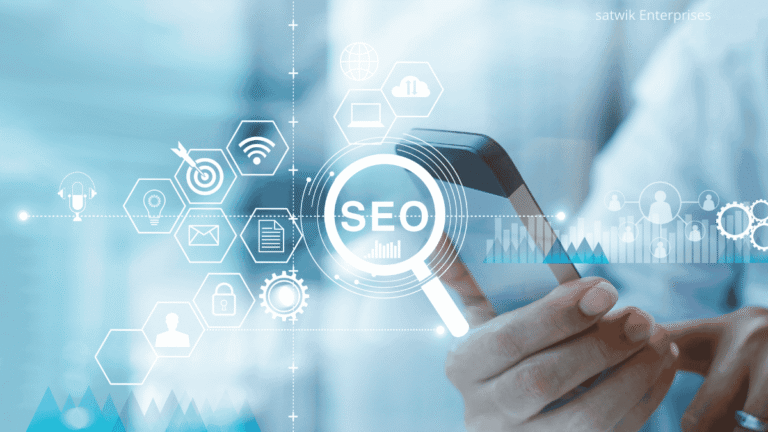
Final Thoughts: Adapt or Be Left Behind
AI on-page SEO strategies are becoming essential. They are not just enhancing how we optimize but redefining it entirely. As algorithms evolve, static strategies won’t be enough. You must evolve too.
Integrating AI into your workflow keeps your SEO strategy effective, up-to-date, and aligned with evolving search engine standards. The content becomes more aligned with user intent, structured for discoverability, and enriched for interaction.
To future-proof your SEO, adopt AI tools that guide not just what to write but how to write it for search visibility. The transformation has begun. Those who embrace it now will lead the digital wave ahead.
For a more in-depth SEO checklist, I follow this strategy.
The Future of SEO in 2026: Trends You Can’t Ignore
Smarter Search Engines with AI
Search engines in 2026 are no longer just algorithms — they are intelligent systems powered by advanced AI. They interpret intent, personalize results, and even predict behavior. This evolution demands that content creators shift from mere keyword stuffing to delivering real value.
Search engines now prioritize user experience over raw keyword frequency. That means sites need to load faster, provide accessible navigation, and offer authoritative content. Additionally, structured data and semantic HTML are playing a bigger role in how search engines interpret pages.
Voice and visual search are expanding rapidly, and mobile-first indexing has become non-negotiable. If your website isn’t optimized for mobile, it’s invisible to half the web traffic. The future SEO strategy 2026 requires marketers to embrace AI tools that analyze behavioral data, track search trends, and even help write better content.
More than 80% of queries are conversational now, and generative search is reshaping what it means to “rank” — AI overviews often replace traditional top-ten results. That’s why snippets, structured data, and FAQ sections are crucial to visibility.
Invest in tools that offer AI-powered SEO audits, predictive analysis, and automated optimization. The future SEO strategy 2026 hinges on leveraging machine learning to deliver intent-rich, high-performing content.

Hyper-Personalization and Predictive SEO
In 2026, personalization has matured into a science. Search results are now curated based on location, past behavior, and even device type. Predictive SEO is the new frontier. Tools now help anticipate user needs before they even search.
Your website needs to understand not only what users are searching for but also why they’re searching. This behavioral insight is central to the future SEO strategy 2026, and content must be aligned with these micro-intents.
Dynamic content, customized landing pages, and targeted messaging based on real-time data define engagement success. Segmenting users and delivering tailored value is no longer optional—it’s expected.
Even your internal linking structure can be personalized now, adjusting based on previous visitor sessions. AI also aids in predictive topic modeling, helping you target emerging queries before your competition.
Adapt to these changes by integrating predictive SEO tools and CRM systems. This approach ensures that every visit is maximized, and bounce rates drop significantly.
Voice Search Optimization and Conversational Content
Voice search is no longer a trend—it’s the standard. With the growth of smart speakers and AI assistants, users speak their queries, often as questions. This shift requires content to be conversational and naturally phrased.
Traditional keywords are ineffective here. You must focus on long-tail, question-based phrases. “How to optimize for Google” has replaced “Google SEO tips.” Schema markup and featured snippets become essential tools.
The future SEO strategy 2026 insists on integrating content that directly answers these questions, often within the first 100 words. Structured FAQ blocks and conversational blog intros are key.
Additionally, voice searches are more likely to trigger local SEO. “Find a digital agency near me” or “best vegan café open now” are contextually-driven and require hyper-local optimization. Ensure your Google Business Profile is up-to-date, your reviews are strong, and your NAP (Name, Address, Phone) consistency is flawless.

Video SEO and Multimodal Content Ranking
Video content dominates SERPs now. In 2026, Google and other engines treat videos as primary content, often showing them before web pages. This shift means text-based SEO is no longer enough.
Your SEO efforts should now involve video transcripts, subtitles, and keyword-rich descriptions. AI tools can auto-generate these, but editing for quality is essential.
YouTube SEO, thumbnail optimization, and video schema must be part of your plan. Even TikTok and Instagram Reels are indexed by some engines now. Diversifying content formats gives you more surface area for discovery.
Multimodal content — combining text, audio, video, and interactive visuals — performs better across AI-powered SERPs. Use multimedia to boost time-on-site and reduce bounce rates. The future SEO strategy 2026 promotes rich content ecosystems that adapt to varied user preferences.
Ethics, Trust, and the Human Element
Despite all these advancements, human trust remains irreplaceable. Google’s E-E-A-T (Experience, Expertise, Authoritativeness, Trustworthiness) framework continues to be a ranking pillar.
Avoid misleading clickbait, AI-generated misinformation, and over-optimization. Ensure transparency, especially in AI-written content. Disclose sources and authorship clearly.
As AI evolves, so does scrutiny. Regulatory bodies now watch for algorithmic bias and digital manipulation. Aligning with ethical practices is both a legal and reputational necessity.
The future SEO strategy 2026 isn’t just about outperforming the algorithm—it’s about building genuine, long-term credibility.
The Rise of AI-Powered Content Services in 2025: Revolutionizing Content Creation or Threatening Human Creativity?
AI-Powered Content Services: Revolutionizing Content in 2025
In 2025, AI-powered content services have cemented their position in the digital marketing ecosystem. These platforms are no longer viewed as gimmicks but as essential productivity tools reshaping how content is planned, created, and distributed. From lean startups to global agencies, the demand for AI-powered content services has exploded, driven by their ability to generate content faster, at scale, and often at a fraction of the traditional cost.
Changing the Rules of Content Creation
Gone are the days when content production involved lengthy brainstorming sessions and hours of drafting. Today, AI tools like Jasper, Copy.ai, Writesonic, and ChatGPT are used to ideate blog topics, write introductions, summarize sources, and even compose full articles. AI-generated outlines help writers break through creative blocks, and auto-suggestions accelerate copywriting tasks. With just a short prompt, a marketing professional can receive multiple article drafts tailored to brand voice and style.
AI-powered content services have also evolved beyond text. They now handle visuals and multimedia too. Tools like Midjourney and DALL·E generate images for blog headers and social posts, while Synthesia creates AI avatars to deliver script-based video content. These capabilities allow marketers to streamline campaigns, reduce dependency on large creative teams, and maintain consistency across formats.
While the benefits are clear, the implications are complex.

Is Creativity Under Threat?
This evolution brings up a polarizing question: Are AI-powered content services threatening human creativity? The concern is understandable. After all, machines are now performing tasks once reserved for human writers, designers, and editors. But it’s important to recognize that the rise of automation doesn’t necessarily equate to the fall of originality.
In most cases, AI doesn’t replace creators—it enhances them. Human input remains essential to guide tone, emotion, cultural nuance, and ethical decision-making. AI can write a blog post, but it can’t understand the subtleties of sarcasm, regional dialects, or emotional storytelling the way a human can.
In fact, some of the most successful content strategies in 2025 involve hybrid workflows, where AI-powered content services generate drafts, outlines, or promotional blurbs, and humans polish them for authenticity and connection. This partnership between humans and machines ensures higher efficiency without sacrificing creativity.
SEO and Personalization at Scale
Perhaps one of the most compelling reasons marketers are adopting AI-powered content services in 2025 is their ability to enhance SEO and personalization. Algorithms now analyze trending keywords, search intent, and user behavior in real-time—generating optimized content tailored to both search engines and audiences.
Instead of relying solely on human keyword research, AI platforms integrate with tools like SEMrush, Ahrefs, and Google Search Console to offer intelligent suggestions. Marketers input their target keyword, and within seconds, the AI proposes subheadings, content gaps, and optimal word counts. The result? Faster production of content that’s more likely to rank.
On the personalization front, AI tools use CRM data and user interactions to dynamically tailor content. Email sequences, product descriptions, and landing page copy can be generated and adjusted in real time based on user personas, preferences, and behaviors. This ability to scale tailored messaging was nearly impossible a decade ago.
Ethics, Plagiarism, and the Black Box Problem
Despite its advantages, AI content generation isn’t without risk. One of the primary concerns in 2025 is the “black box” nature of many AI platforms—where content is generated from vast datasets with little visibility into the sources used. This raises issues of plagiarism, misinformation, and brand safety.
To combat this, leading companies are implementing AI content guidelines and human review layers. Some platforms now offer citation trails and originality scores, giving businesses more confidence in using generated content publicly. Still, the burden remains on content teams to fact-check and add unique value.
Ethical use of AI-powered content services also involves transparency. Brands that openly communicate their use of AI in content creation are often viewed as more trustworthy. For example, some websites now label AI-assisted content clearly or provide a “created with AI assistance” disclaimer at the end of articles.
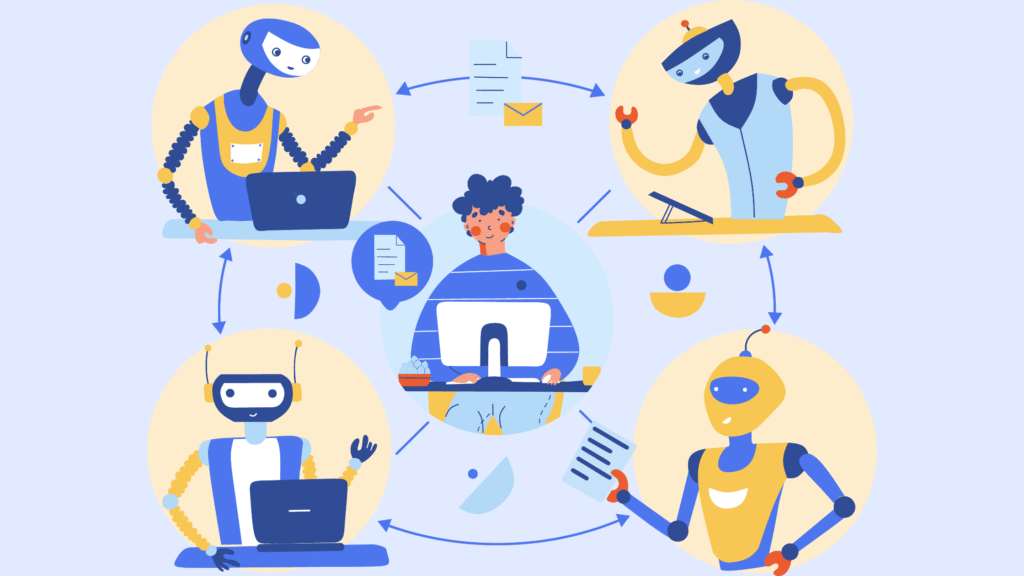
Upskilling and the Future Workforce
Another major shift is how digital marketers are upskilling to work with AI rather than against it. Content creators today are learning prompt engineering, training custom AI models, and developing brand-specific datasets to fine-tune AI outputs. Copywriters are evolving into content strategists and editors, overseeing large volumes of AI-assisted material and ensuring brand alignment.
In this environment, value comes from judgment, strategic thinking, and emotional intelligence—areas where humans still excel. The best-performing teams in 2025 are not those that resist AI, but those that integrate it intelligently.
Strategic Adoption Wins the Day
As AI continues to develop, it’s tempting to automate everything. But wise marketers know that AI-powered content services are most effective when used selectively and strategically. Not all content should be AI-generated. Thought leadership, deep opinion pieces, and complex storytelling still benefit from a human-first approach.
Organizations that adopt a “human-in-the-loop” model—where AI handles volume and humans ensure quality—see the most sustainable success. In this way, content creation becomes faster, more data-driven, and scalable, without losing the brand’s soul.
Frequently Asked Questions
What are AI-powered content services?
AI-powered content services are platforms that use artificial intelligence to generate, optimize, and manage content. These tools assist in writing, designing, and personalizing content across blogs, websites, and social media.
How do AI tools help digital marketers in 2025?
In 2025, AI tools help digital marketers by automating content creation, enhancing SEO, personalizing messaging, and improving campaign efficiency. They allow faster content output with data-driven insights.
Will AI replace human content creators?
AI won’t replace human creators entirely. Instead, it complements their work by handling repetitive tasks, enabling creators to focus on strategy, creativity, and emotional storytelling.
Are there ethical concerns with AI-generated content?
Yes, ethical concerns include potential plagiarism, misinformation, lack of transparency, and the ‘black box’ nature of AI models. Responsible use and human oversight are essential.
Unlocking Untapped Revenue Streams: How Digital Marketers Will Earn in 2025
The Changing Economics of Digital Marketing
As we step into 2025, the digital marketing landscape is experiencing significant shifts in how professionals generate revenue. Traditional methods—affiliate marketing, display ads, and sponsored content—still hold value, but newer trends are paving alternative paths.Lorem ipsum dolor sit amet, consectetur adipiscing elit. Ut elit tellus, luctus nec ullamcorper mattis, pulvinar dapibus leo.
Much of the change stems from evolving consumer behavior and platform dynamics. Privacy regulations are tighter, and first-party data is becoming the backbone of strategic planning. Marketers are adapting to decentralized platforms, AI-driven content personalization, and the rise of creator-led communities.
Not all opportunities are obvious. Some revenue streams have emerged from underutilized niches or technologies. With the right strategies, digital marketers can position themselves as early adopters and earn more by tapping into these evolving models.
Interestingly, digital marketing income streams have diversified beyond client work and ad revenue. Professionals are creating hybrid models that combine education, automation, and community-based monetization. This shift isn’t just about earning more—it’s about working smarter and building scalable systems.
By 2025, marketers who understand these dynamics will be better equipped to leverage new channels, create sustainable revenue, and thrive amid industry disruption.

Selling Knowledge at Scale
Knowledge has become a product—and a profitable one. With the creator economy booming, digital marketers are turning their skills into revenue-generating digital products.
Online courses, masterclasses, and paid newsletters are now mainstream offerings. Platforms like Kajabi, Gumroad, and Substack have made it easier than ever to monetize expertise. These aren’t just side hustles; they are primary income sources for many professionals.
What makes this shift powerful is scalability. Unlike one-on-one services, knowledge products can be sold repeatedly with minimal additional effort. Once the content is created, marketing becomes the main driver of success.
Subscription models add even more value. Monthly memberships that deliver continuous learning—like SEO tips, social ad playbooks, or email templates—build recurring revenue. These options have become vital parts of many digital marketing income streams.
Because of high competition, success depends on positioning and niche targeting. General knowledge sells less than specialized, actionable advice. Marketers who focus on results and transformation command higher prices—and attract more loyal customers.
Monetizing Micro-Communities
Gone are the days when mass audiences were necessary to generate income. In 2025, the money is in the micro—micro-communities, that is.
Niche audiences are not only more engaged but also more willing to pay for value. Digital marketers are leveraging private communities on platforms like Discord, Circle, and Mighty Networks to generate substantial income. These communities serve dual purposes: audience nurturing and product funnels.
Value is delivered through regular content, live sessions, group coaching, and resource libraries. Access often comes with a price tag—monthly fees, annual subscriptions, or bundled course packages. These community-based platforms form a key pillar in modern digital marketing income streams.
Because trust is high in small communities, conversion rates often outperform traditional email funnels. Marketers also get immediate feedback, allowing them to refine offerings in real-time.
One of the most effective strategies is offering exclusive templates, swipe files, or campaign walkthroughs. These assets create tangible value and justify premium pricing. The passive voice is occasionally used to streamline content.
Ultimately, micro-communities allow for deep relationships, continuous income, and brand advocacy—all while keeping overhead low.
Leveraging Affiliate Ecosystems
Affiliate marketing is far from dead—it’s simply evolving. In 2025, savvy marketers are earning more by aligning with high-ticket, high-value programs.
Unlike the low commissions from generic Amazon links, today’s top affiliates focus on software, online courses, and tools tailored to professionals and businesses. These programs often offer 30% to 50% commissions—sometimes recurring.
The new affiliate ecosystem is based on credibility. Marketers build trust with niche audiences before recommending tools. Reviews, comparison posts, and tutorial videos serve as soft sales mechanisms.
For those building newsletters or podcasts, affiliate links can be seamlessly integrated into regular content. Combined with personal branding, this strategy boosts both conversions and earnings. Notably, digital marketing income streams are strengthened when affiliate promotions align with actual use and experience.
Transparency is critical. Disclosures are not only legal requirements but also trust builders. Marketers who treat affiliates as problem-solving tools rather than revenue generators build stronger long-term results.
This affiliate-first approach is no longer a side gig. For many, it’s a full-fledged income channel with predictable monthly payouts.

AI and Automation-Driven Revenue
Artificial intelligence is not just a tool—it’s an income enabler. In 2025, digital marketers are using AI to streamline services and create revenue-generating products.
Chatbots, automated content generators, and predictive analytics tools are being white-labeled or sold as part of consulting packages. Others are creating AI-enhanced templates for campaign optimization, ad performance, or SEO audits.
The big shift? Marketers aren’t just using AI—they’re selling access to it. Whether bundled in a membership, offered as a standalone tool, or included in a course, AI-backed systems are redefining digital marketing income streams.
Automation also enables leaner business models. Email sequences, client onboarding, and data reporting are often automated, freeing up time for high-value activities. Some revenue streams, like data dashboards or performance templates, are delivered entirely without manual involvement.
Using AI responsibly is a competitive advantage. While it enhances productivity, marketers who humanize its output maintain authenticity and trust.
AI is not replacing marketers. Instead, it’s amplifying their capabilities—and unlocking smarter ways to monetize expertise.
Licensing and White-Label Services
Another emerging trend is licensing intellectual property. Digital marketers are turning existing assets—workflows, templates, even entire service systems—into licensable products.
White-label services are also gaining traction. Agencies and solo marketers offer ready-made solutions that others can brand and resell. This model creates passive income while expanding reach.
For example, a prebuilt funnel or campaign framework can be sold to other marketers with full usage rights. Some even offer white-label courses or coaching programs. These create multiple digital marketing income streams without requiring continuous delivery.
This model is especially attractive for those who’ve refined systems over time. Licensing eliminates the need to rebuild or teach from scratch. Instead, marketers profit by giving others the tools to succeed.
These assets are promoted via personal brands, LinkedIn, or niche forums. They provide scale without the pressure of audience building from zero. It’s a behind-the-scenes model with front-row earning potential.
Final Thoughts: Strategic Diversification Wins
The most successful digital marketers in 2025 aren’t relying on one revenue stream. They’re building digital marketing income streams that are layered, scalable, and aligned with their brand.
From monetizing knowledge to leveraging AI, the key is strategic diversification. Each income stream plays a role—some are active, others passive. Together, they create a sustainable business model.
Marketers must stay agile. What works now may shift with platform updates, consumer expectations, or tech evolution. Testing, learning, and adapting remain core skills.
As competition increases, those who lead with value and authenticity will thrive. Earning potential will grow—not just in dollars, but in freedom, reach, and impact.
In 2025, the best way to earn more is to work smarter—and smarter starts with choosing the right mix of digital marketing income streams.
The 5 Best Digital Marketing Tools for 2025: A Deep Dive into AI-Driven Automation & Hyper-Personalization

Introduction to AI-Driven Marketing Tools
AI-driven marketing tools are transforming how businesses connect with audiences. These innovations leverage advanced algorithms to deliver tailored experiences, boosting engagement and conversions. In 2025, the emphasis on hyper-personalization means tools must adapt in real time.
Marketers are increasingly adopting these solutions to streamline workflows. For instance, AI-driven marketing tools analyze data patterns and predict user behavior, creating customized campaigns. However, selecting the right ones requires understanding their capabilities.
This section explores five standout AI-driven marketing tools, each excelling in hyper-personalization. These tools automate processes while making interactions feel personal. Benefits include higher ROI and stronger customer loyalty. AI-driven tools are essential for staying competitive.
Tool 1: HubSpot's AI Personalization Engine
HubSpot’s AI personalization engine stands out as a key AI-driven tools for hyper-personalization. It uses machine learning to segment audiences based on behavior, ensuring content is tailored to individual preferences.
Emails and web experiences are optimized dynamically. For example, recommendations are generated in real time, increasing click-through rates. This tool integrates seamlessly with CRM systems.
Hyper-personalization is achieved through predictive analytics. User data is analyzed to forecast needs, which results in more relevant messaging. Approximately 70% of users report improved engagement with such features.
AI-driven tools like this one save time by automating routine tasks. It can be set up quickly for small businesses.
Tool 2: Salesforce Einstein
Salesforce Einstein is another powerful AI-driven tools designed for hyper-personalization. It employs AI to process vast datasets, enabling personalized customer journeys across channels.
Content is adapted based on past interactions, such as suggesting products that match browsing history. This ensures every touchpoint feels individualized. Recommendations are refined over time through continuous learning.
In practice, Einstein automates A/B testing and optimizes campaigns. Marketers can track performance metrics in real time. AI-driven tools like Einstein have been integrated by major brands to enhance retention.
Hyper-personalization is supported by its predictive capabilities, which forecast customer churn. This tool is favored for its scalability.
Tool 3: Google Analytics AI Insights
Google Analytics AI Insights serves as essential AI-driven tools for hyper-personalization in 2025. It harnesses AI to uncover patterns in user data, allowing for targeted content delivery.
Insights are generated automatically, highlighting trends that inform personalization strategies. For instance, demographic data is used to customize ads.
This tool integrates with other platforms, making it versatile for marketers. AI-driven marketing tools such as this one provide actionable recommendations quickly.
Reports can be visualized easily, aiding decision-making. Hyper-personalization is enhanced by its ability to segment audiences precisely. Overall, it drives better outcomes.

Tool 4: Optimizely's Personalization Suite
Optimizely’s Personalization Suite represents innovative AI-driven tools focused on hyper-personalization. It tests variations of content in real time, adapting to user responses for optimal experiences.
Experiments are run efficiently, with AI determining what works best. Personalization is applied across websites and apps, improving conversion rates.
For example, product pages are modified based on visitor data. AI-driven tools like this suite enable rapid iterations. They are particularly useful for e-commerce.
Hyper-personalization is facilitated by its machine learning algorithms, which learn from interactions. This results in higher customer satisfaction.
Tool 5: Dynamic Yield Platform
Dynamic Yield Platform is a top AI-driven marketing tools for achieving hyper-personalization in 2025. It uses AI to deliver real-time recommendations, tailoring content to individual users instantly.
Behavioral data is processed to create customized experiences, such as personalized email sequences. Marketers benefit from its predictive features.
Integration with e-commerce systems is straightforward. AI-driven tools like Dynamic Yield reduce abandonment rates significantly.
Hyper-personalization is key, as the platform adapts to preferences on the fly. This tool has been adopted by retailers worldwide. It stands out for its precision.
Conclusion: Embracing AI-Driven Marketing Tools
AI-driven marketing tools are revolutionizing strategies with hyper-personalization. The five tools discussed—HubSpot, Salesforce Einstein, Google Analytics AI Insights, Optimizely, and Dynamic Yield—offer robust solutions.
Each one automates processes while focusing on user-specific needs. In 2025, businesses must prioritize these for competitive edges. Adoption can lead to measurable growth.
Remember, effective use involves testing and refinement. AI-driven marketing tools will continue to evolve, making personalization even more impactful.
Top AI Marketing Agency in 2025: The Rise of AI-Powered Specialization
Top AI Marketing Agency in 2025: The Rise of AI-Powered Specialization

The Dawn of Specialized AI Agencies
The digital marketing landscape is constantly evolving, and by 2025, Artificial Intelligence (AI) will be firmly entrenched as a cornerstone of successful strategies. We’re moving beyond the generalist approach. This means that the AI marketing agency future will be defined by agencies boasting deep specialization. Agencies won’t just offer “AI marketing“; they’ll specialize in AI-powered SEO, AI content generation for specific industries, or AI-driven personalization for e-commerce. This targeted approach will allow for greater expertise and, ultimately, better results for clients. The agencies that can deliver niche AI solutions will be the ones that thrive. Client expectations are increasing.
Why Specialization Matters in the AI Era
The sheer power of AI can be overwhelming. Implementing AI effectively requires a deep understanding of both the technology and the specific nuances of a client’s industry and business goals. A generalized AI marketing approach simply won’t cut it. AI marketing agency future success depends on targeted use. Imagine an agency specializing in AI-powered lead generation for SaaS companies. It will have a deep understanding of the SaaS sales cycle, ideal customer profiles, and the specific AI tools that can optimize lead scoring and nurturing. This focused expertise translates to superior performance and a higher return on investment for the client. It’s a win-win scenario.
AI-Powered Tools and Services in Demand
Certain AI-powered tools and services will be highly sought after. Predictive analytics, able to forecast market trends and customer behavior, will be invaluable. Content automation, for generating high-quality, engaging content at scale, will be essential for content marketing strategies. Personalization engines, that tailor customer experiences in real-time, will be key for boosting conversion rates. These tools are powerful. An AI marketing agency future leader will offer these services. It is also expected that agencies will need to offer some level of AI training to their clients to ensure they can properly use and understand the outputs provided.
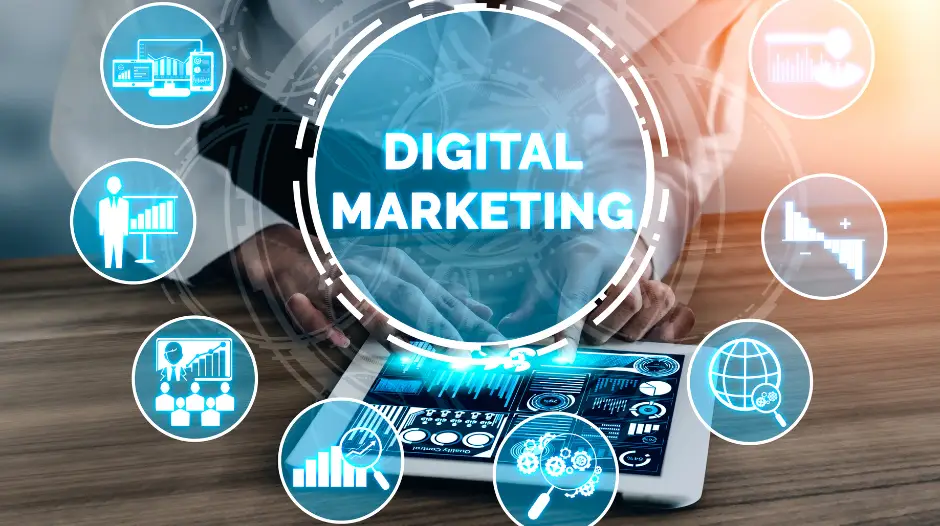
Satwik Enterprises: Embracing the Future
Satwik Enterprises is committed to staying at the forefront of this rapidly changing landscape. We’re investing heavily in developing our expertise in specialized AI marketing solutions. We understand the importance of niche knowledge and the power of targeted AI applications. We are embracing the AI marketing agency future. Our team is dedicated to providing our clients with innovative and effective AI-powered strategies that drive tangible results. We believe that specialized AI marketing is not just a trend, but the future of the industry. Expect Satwik Enterprises to be a key player in shaping that future. This commitment is central to our mission.
Navigating Ethical Considerations
As AI becomes more prevalent in marketing, ethical considerations become paramount. Data privacy, algorithmic bias, and transparency are crucial issues that must be addressed. The AI marketing agency future needs to be responsible. Agencies must ensure that their AI-powered strategies are ethical, fair, and compliant with all relevant regulations. This requires a proactive approach to data governance, algorithm auditing, and ongoing monitoring. We are committed to using AI responsibly and ethically, and we work closely with our clients to ensure that their AI-powered marketing efforts align with their values and principles. Trust is paramount in all our dealings.
Bihar Elections 2025: Can Digital Marketing Be the Kingmaker?
Bihar Elections 2025
Can Digital Marketing Be the Kingmaker?
The air in Bihar is already thick with anticipation, even though the 2025 elections are still some distance away. The state, perpetually at the crossroads of political churn, is bracing itself for another significant chapter. The current political landscape, a complex tapestry woven with shifting alliances and deeply entrenched social dynamics, demands innovative approaches from aspiring leaders. Enter digital marketing – a potentially game-changing tool capable of breaking through traditional barriers and connecting directly with the electorate.
A Look at the Current Political Climate:
Bihar’s political arena remains a fascinating, albeit often unpredictable, space. Decades of coalition governments, a strong caste-based voting system, and ingrained regional loyalties shape the outcomes. While the current ruling alliance, a somewhat fragile coalition, holds sway, the opposition actively seeks to capitalize on discontent and perceived shortcomings.
Several factors will likely dominate the narrative leading up to 2025. Economic development (or the lack thereof), employment opportunities for the youth, law and order, and agricultural issues will remain key talking points. The performance of the current government in addressing these concerns will be scrutinized, and the opposition will undoubtedly seize any opportunity to highlight failures. The rise of identity politics and the ongoing debate around social justice will also play a significant role in shaping voter sentiments.
Historically, traditional campaign methods – rallies, door-to-door canvassing, and print media – have been the backbone of political outreach in Bihar. However, the growing penetration of mobile phones and internet access, even in rural areas, presents a compelling argument for embracing digital strategies.
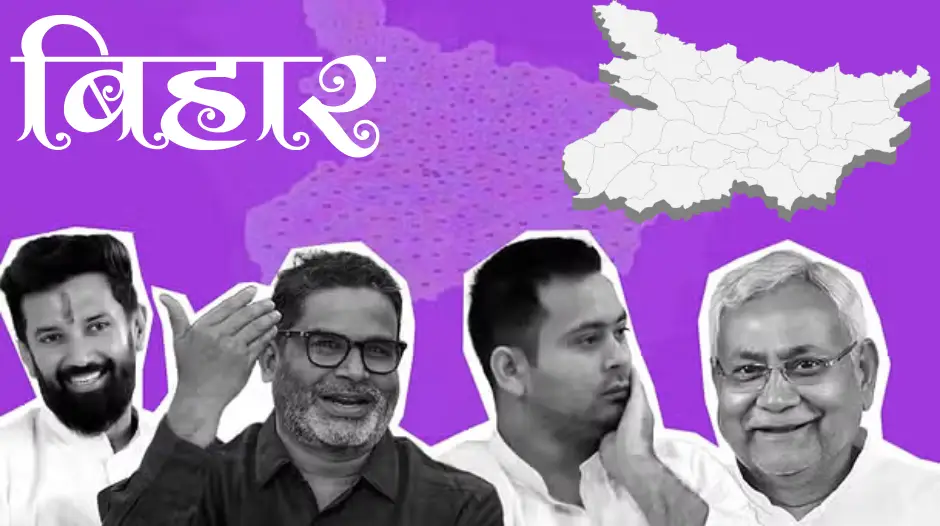
Digital Marketing: A New Frontier for Bihar Elections
While Bihar may still lag behind other states in terms of digital literacy, the increasing smartphone penetration, coupled with affordable data plans, is creating a fertile ground for digital marketing. Candidates who strategically leverage this medium can gain a significant advantage in reaching and influencing voters.
1. Hyper-Targeted Messaging: Speaking Directly to the Electorate
- A key advantage of digital marketing lies in its capacity to segment audiences and deliver personalized messaging. Unlike traditional methods that rely on a blanket approach, digital platforms allow candidates to target voters based on age, gender, location, caste, interest and even past voting behavior.
- Practical Application: A candidate could create separate campaigns for youth, focusing on employment opportunities and skill development, and another campaign geared towards farmers, addressing issues related to irrigation, crop pricing, and loan waivers.
- Bihar Specific Benefit: By segmenting the audience based on caste and regional loyalties, candidates can craft specific messages that resonate with these groups, addressing their unique concerns and aspirations.
- Overcoming Challenges: Although data availability can be an issue in Bihar, candidates can use readily available demographic information and surveys to build targeted audience profiles. Focus groups and on-the-ground research can further refine these profiles.
2. Cost-Effective Outreach: Reaching More Voters with Less
- Compared to traditional methods like rallies and print advertising, digital marketing offers a significantly more cost-effective way to reach a large audience.
- Practical Application: Running targeted Facebook or YouTube ad campaigns can be far more economical than organizing large-scale rallies, especially in remote areas. Furthermore, digital campaigns can be tracked and optimized in real-time, ensuring that resources are used effectively.
- Bihar Specific Benefit: This is particularly important in a state like Bihar, where campaign funds are often limited. Digital marketing allows candidates with smaller budgets to compete effectively with those who have deeper pockets.
- Overcoming Challenges: In areas with limited internet access, candidates can use SMS marketing to reach voters with basic information, such as rally schedules and candidate profiles. Partnering with local community centers and providing internet access points can also help bridge the digital divide and promote online engagement.
3. Enhanced Engagement & Two-Way Communication: Building a Personal Connection
- Digital platforms facilitate two-way communication between candidates and voters, fostering a sense of engagement and building trust.
- Practical Application: Candidates can use social media platforms like Twitter and Facebook to answer questions, address concerns, and participate in online debates. Live Q&A sessions using Facebook Live or YouTube Live can provide a platform for direct interaction with the electorate.
- Bihar Specific Benefit: This can be particularly effective in addressing the concerns of marginalized communities and creating a sense of inclusivity. Candidates can use digital platforms to amplify the voices of these communities and demonstrate their commitment to addressing their needs.
- Overcoming Challenges: To ensure effective interaction, it’s essential to prioritize communication that is both genuine and adaptable.. Candidates need to dedicate resources to monitoring social media channels and responding to queries in a timely and courteous manner. Training campaign staff to handle online interactions effectively is essential.
4. Data-Driven Insights & Real-Time Optimization: Refining Campaign Strategies
- Digital marketing provides access to a wealth of data that can be used to track campaign performance, understand voter sentiments, and refine strategies in real-time.
- Practical Application: By analyzing website traffic, social media engagement, and ad campaign performance, candidates can identify what messages are resonating with voters and what areas need improvement. This allows them to optimize their campaigns for maximum impact.
- Bihar Specific Benefit: This data-driven approach can help candidates overcome the traditional reliance on anecdotal evidence and gut feelings. By understanding what issues are top-of-mind for voters in different regions, candidates can tailor their messaging to address these concerns.
- Overcoming Challenges: Interpreting data and drawing meaningful insights requires expertise. Candidates need to invest in analytics tools and train their staff to understand and utilize the data effectively. Protecting voter privacy and complying with data protection regulations is also crucial.
5. Sentiment Analysis and Reputation Management: A Proactive Approach
- Digital media allows for constant real-time monitoring of what’s being said about a candidate and their party. This allows for quick response of misinformation or rumours.
Practical Application: Using monitoring tools can allow campaigns to identify spikes in discussion or negative comments. These can then be addressed immediately rather than being allowed to fester.
- Bihar Specific Benefit: In a state rife with misinformation and where rumours can spread quickly, reputation management is critical. Addressing rumours before they take hold can be key to campaign success.
- Overcoming Challenges: Campaign teams need to be prepared to respond quickly and appropriately to negative comments or misinformation. A good response is honest, addresses the underlying issue, and is shared widely with voters.
Conclusion:
The 2025 Bihar elections present a unique opportunity for candidates willing to embrace digital marketing. By leveraging the power of targeted messaging, cost-effective outreach, enhanced engagement, data-driven insights, and online reputation management, candidates can connect with voters in a way that was previously impossible. While challenges remain in terms of digital literacy and internet access, the potential rewards are significant.
Those who strategically integrate digital marketing into their overall campaign strategy will be best positioned to shape the narrative, influence voters, and ultimately, emerge victorious in the upcoming elections. The question is not if digital marketing will play a role, but how effectively it will be used to sway the hearts and minds of the Bihari electorate. In 2025, digital savvy just might be the new kingmaker.
The Battle for Bihar: Navigating the Digital Landscape of the 2025 Elections
The Battle for Bihar
Navigating the Digital Landscape of the 2025 Elections
Bihar, a state steeped in history and grappling with complex socio-economic realities, is gearing up for its next electoral battle in 2025. The political landscape is a kaleidoscope of alliances, shifting loyalties, and deeply entrenched caste dynamics. Understanding the current scenario and leveraging the power of digital marketing will be crucial for any party hoping to secure a victory. This blog delves into the current political climate, predicts potential gainers, explores the role of digital marketing, and highlights how Satwik Enterprises can provide a competitive edge through its tailored digital and AI services.
The Current Cinerous: A State of Flux
The current Bihar government, a coalition led by the Janata Dal (United) (JDU) with support from the Rashtriya Janata Dal (RJD) and other parties, has seen its share of turbulence. The Nitish Kumar-led government faces challenges including:
- Anti-incumbency: After a long tenure, the JDU faces the natural erosion of public trust and the desire for change.
- Internal contradictions: The alliance with the RJD, while powerful on paper, is built on potentially conflicting ideologies and power dynamics.
- Socio-economic issues: Bihar continues to grapple with poverty, unemployment, and lack of adequate infrastructure, providing fertile ground for opposition parties to capitalize on public discontent.
- Caste Politics: The political landscape is heavily influenced by caste dynamics, and parties must carefully navigate these complexities to garner support.
On the other hand, the Bharatiya Janata Party (BJP), now in opposition, sees a significant opportunity to expand its influence. Riding on a national wave and focusing on development and Hindutva, the BJP aims to replicate its success in other states. Other regional players, like the Lok Janshakti Party (LJP) factions, also hold sway in specific pockets of the state, making the 2025 election a multi-cornered contest.
Predicting the Gainers: A Game of Strategic Positioning
Predicting winners in Bihar’s complex political scenario is a challenge, but here’s a potential outlook:
- BJP: With a strong organizational structure and a nationwide appeal, the BJP stands to gain significantly. Their ability to consolidate upper-caste votes, target specific backward castes, and highlight perceived failures of the current government makes them a formidable force.
- RJD: The RJD, with its strong base among Yadavs and Muslims, will continue to be a major player. However, their success hinges on effectively addressing concerns about corruption and promoting a more inclusive image to attract broader support.
The performance of the JDU will be crucial. Can Nitish Kumar successfully address anti-incumbency and present a vision for future growth? Their ability to manage the alliance with the RJD and retain support from Kurmi and OBC voters will be defining factors.
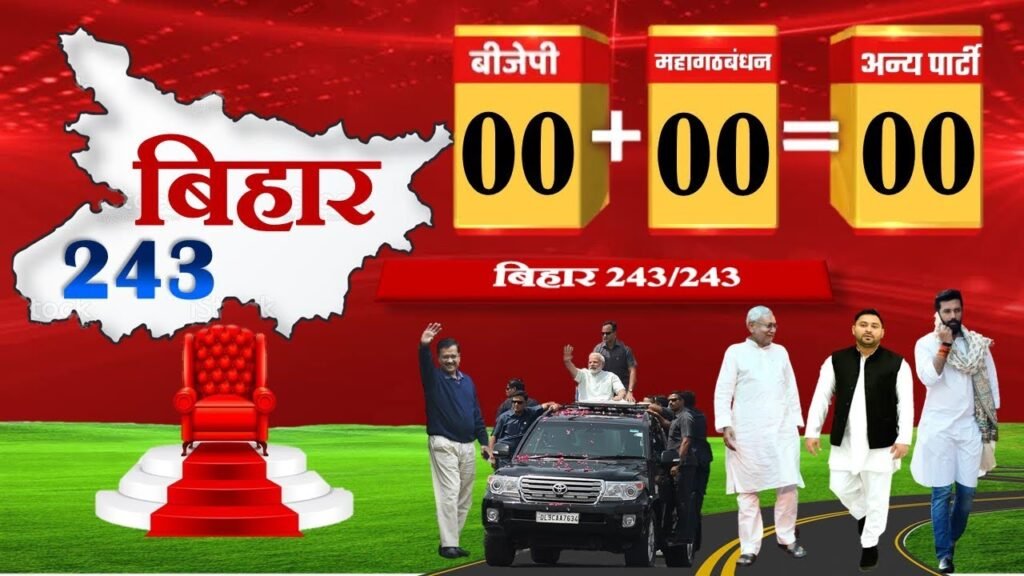
Digital Marketing: The New Battleground for Bihar
In the age of the internet, digital marketing is no longer an option but a necessity for political parties. Bihar, despite its rural landscape, has seen a significant increase in internet penetration, especially among younger voters. Effective digital marketing strategies can help parties:
- Reach a wider audience: Traditional methods like rallies and posters have limitations. Digital platforms allow parties to directly engage with voters across geographical boundaries and demographic segments.
- Target specific demographics: Digital advertising platforms allow for precise targeting based on age, location, caste, interests, and other factors. This ensures that messages reach the most relevant audiences.
- Shape public opinion: Social media platforms are powerful tools for disseminating information, countering misinformation, and shaping public perception.
- Mobilize support: Digital campaigns can be used to encourage voter registration, promote participation in rallies and events, and mobilize supporters on election day.
- Cost-effectiveness: Digital marketing can be more cost-effective than traditional methods, especially for reaching specific demographics.
- Data Analytics: Data analytics will help parties to understand voters sentiment and accordingly change their campaign strategy.
Key Digital Marketing Strategies for the 2025 Bihar Elections:
- Platform Selection: Focusing on platforms with high usage in Bihar, such as Facebook, WhatsApp, YouTube, and local social media networks could be beneficial.
- Content Strategy: Creating engaging content in local languages (Hindi, Bhojpuri, Maithili) with a mix of text, images, and videos is essential.
- Organic Reach: Optimizing content for search engines to boost organic visibility and utilizing effective hashtags to increase discoverability.
- Paid Advertising: Running targeted ad campaigns to reach specific voter segments with tailored messages.
- Influencer Marketing: Collaborating with local influencers and community leaders to amplify messages and build trust.
- Keyword Research: Identifying keywords related to local issues, leaders, and political agendas.
- On-Page Optimization: Optimizing website content, meta descriptions, and title tags for relevant keywords.
- Off-Page Optimization: Building high-quality backlinks from reputable local websites and news sources.
• Content Marketing:
- Blog Posts: Creating informative articles on local topics, addressing voter concerns, and promoting party agendas.
- E-books and Whitepapers: Developing in-depth content on key policy issues, presenting data-driven insights, and offering solutions.
- Infographics: Designing visually appealing infographics to present complex information in an easily digestible format.
- Podcasts: Hosting discussions with party leaders, experts, and community members to engage in conversations on relevant issues.
- Bulk Messaging: Sending targeted messages to opted-in phone numbers to share updates, announcements, and promotional content.
- Chatbot Integration: Implementing AI-powered chatbots to answer common questions, provide information, and assist voters in real-time.
Satwik Enterprises: Your Strategic Partner for Digital Success in Bihar
Satwik Enterprises understands the nuances of Bihar’s political landscape and the power of digital marketing. We offer a comprehensive suite of digital and AI services tailored to help political parties achieve their goals:
- Digital Strategy Development: We work with parties to develop a comprehensive digital marketing strategy aligned with their goals, target audience, and budget.
- Social Media Management: We manage social media accounts, create engaging content, run targeted ad campaigns, and monitor online sentiment.
- SEO & Content Marketing: We optimize websites for search engines, create high-quality content, and build online authority.
- Data Analytics & Insights: We provide data-driven insights to help parties understand voter behavior, track campaign performance, and optimize their strategies.
- AI-Powered Solutions:
- Sentiment Analysis: Leveraging AI to analyze social media conversations and news articles to gauge public sentiment towards the party and its candidates.
- Chatbots: Deploying AI-powered chatbots on websites and messaging platforms to answer voter inquiries, provide information, and collect feedback.
- Predictive Analytics: Using AI algorithms to predict voter behavior, identify key demographics, and optimize campaign strategies.
- SMS Marketing: Bulk SMS integration with analytics service for detailed insights.
- WhatsApp Marketing: Automate WhatsApp campaign with AI for better reach and effective communication.
- AI Powered Tools: Tools that can automatically respond to queries, generate human like content and manage multi platform seamlessly.
Reaching Rural Bihar: Bridging the Digital Divide
While internet penetration is growing, reaching rural areas requires a multi-pronged approach:
- Mobile-First Strategy: Optimize all digital content for mobile devices, as smartphones are the primary mode of internet access in rural areas.
- Offline Initiatives: Combine digital campaigns with on-the-ground activities like community meetings, street plays, and mobile video screenings.
- Local Language Content: Create content in local dialects to resonate with rural audiences.
- Partnerships with Local Influencers: Collaborate with village leaders, community organizers, and local NGOs to build trust and amplify messages.
- Interactive Voice Response (IVR): Use IVR technology to deliver pre-recorded messages and collect feedback from voters who may not have internet access.
Conclusion: Winning the Digital Battle for Bihar
The 2025 Bihar elections will be a fiercely contested battle, and digital marketing will play a crucial role in determining the outcome. Parties that effectively leverage digital platforms, tailor their messages to specific audiences, and combine digital strategies with on-the-ground initiatives will have a significant advantage. Satwik Enterprises is committed to providing political parties with the tools and expertise they need to navigate the digital landscape and achieve their electoral goals in Bihar. By understanding the nuances of the local environment, leveraging the latest digital technologies, and focusing on data-driven strategies, we can help parties connect with voters, shape public opinion, and ultimately, win the battle for Bihar.




